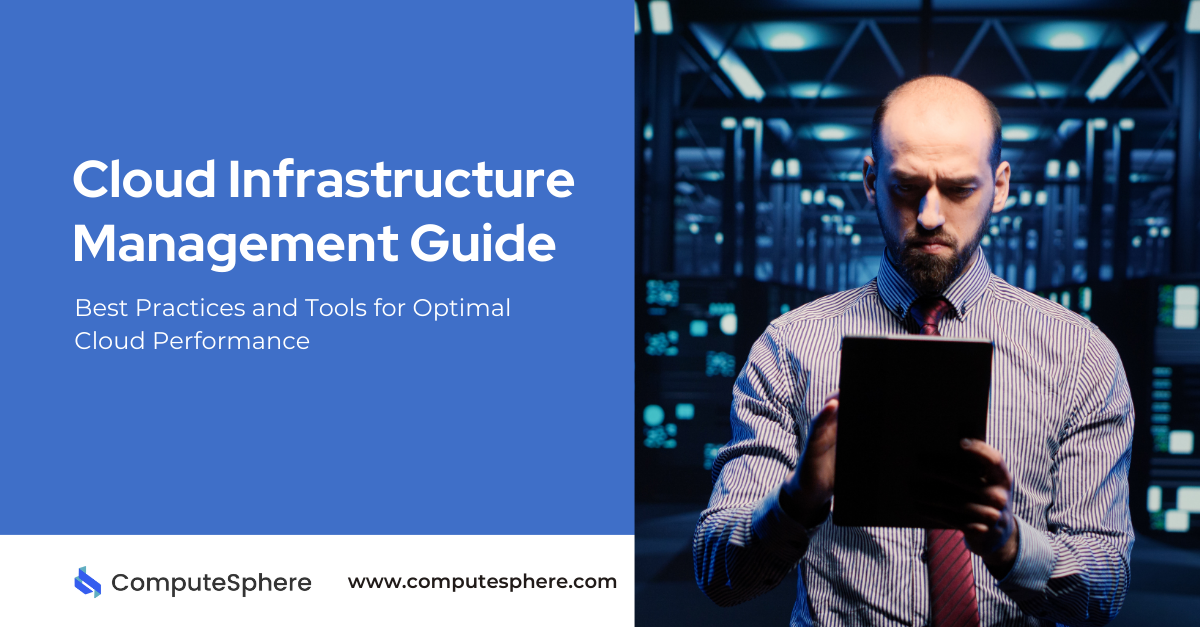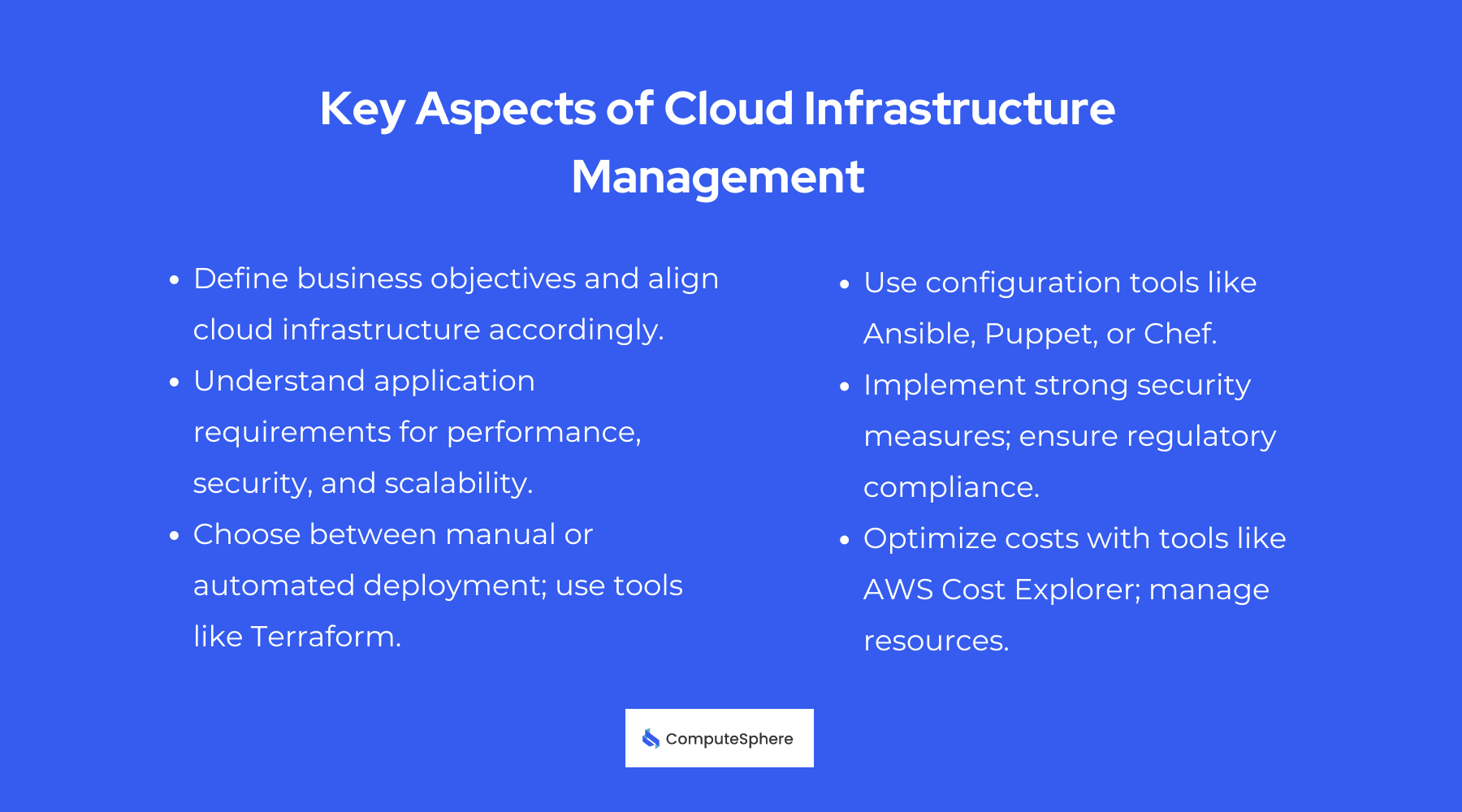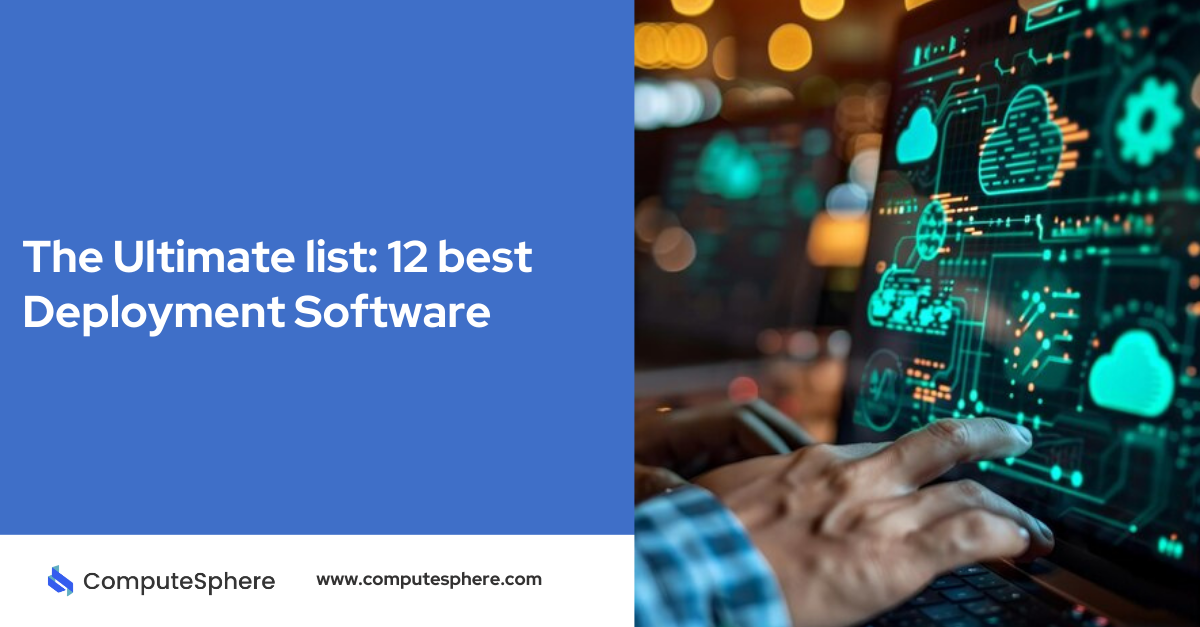Comprehensive Guide to Cloud Infrastructure Management: Best Practices & Tools

From small startups to large enterprises, businesses across industries use cloud computing to innovate, scale, and achieve greater agility. Yet, the full potential of the cloud is more than simply migrating applications to the cloud. It requires the best approach to managing the underlying infrastructure, known as Cloud Infrastructure Management.
In this guide, we will discuss the fundamentals of cloud computing and the key components of cloud infrastructure, including effective management. You will explore the best tools and practices for optimizing performance, improving security, and cutting costs.
Understanding Cloud Infrastructure: Laying the Foundation
Before you start managing cloud infrastructure, it's important to understand the foundational concepts that help you manage it better.
Cloud Computing Fundamentals
Cloud computing involves providing computing resources like servers, storage, networking, and software over the internet, on demand. This shift away from traditional on-premises infrastructure offers many benefits, including:
- IaaS (Infrastructure as a Service): This model provides virtualized computing resources, such as servers, storage, and networking, giving users complete control over the infrastructure. Examples include AWS EC2, Azure Virtual Machines, and Google Compute Engine.
- PaaS (Platform as a Service): PaaS goes beyond infrastructure by offering a platform for developing, running, and managing applications. It provides pre-configured environments and tools, simplifying application development and deployment. Examples include AWS Elastic Beanstalk, Azure App Service, and Google App Engine.
- SaaS (Software as a Service): SaaS focuses on providing ready-to-use software applications delivered over the Internet. Users access these applications via a web browser, eliminating the need for installation and maintenance. Examples include Salesforce, Microsoft Office 365, and Dropbox.
Infrastructure Components:
Cloud infrastructure comprises various core components, each playing a vital role in enabling the smooth functioning and scalability of cloud services:
- Servers: Virtualized servers form the bedrock of cloud infrastructure, offering computing power for running applications and workloads.
- Storage: Cloud storage solutions provide reliable and scalable data storage, ranging from block storage for raw data to object storage for unstructured data.
- Networking: Cloud networks facilitate communication between virtual machines, applications, and users, enabling data transfer and network connectivity.
- Databases: Cloud databases offer flexible and scalable data storage and management, catering to various application needs.
- Security: Cloud security is paramount, encompassing measures like access control, data encryption, and intrusion detection to safeguard sensitive information.
Key Aspects of Cloud Infrastructure Management

Effective cloud infrastructure management involves many steps, including planning, deployment, monitoring, security, and cost optimization.
Planning and Design
A well-defined plan is important for successful cloud infrastructure management. Before you deploy, you must understand the following requirements.
1. Business Needs: Clearly define your business objectives and how cloud infrastructure can contribute to your achievement.
2. Application Requirements: Understand the specific performance, security, and scalability demands of your applications.
3. Budget: Establish a clear budget allocation for cloud resources, factoring in usage costs and potential optimization opportunities.
4. Security: Prefer security from the outset, implementing appropriate measures to safeguard data and applications. Once you complete the planning phase, you can deploy and configure cloud resources.
Choose from manual deployment, which offers flexibility but can be time-consuming, or automated deployment using tools like Terraform or CloudFormation, ensuring consistency and speed.
You can use configuration management tools like Ansible, Puppet, or Chef to manage and automate the configuration of cloud resources, ensuring uniformity and compliance.
Monitoring and Performance Management
Continuous monitoring is also important for maintaining optimal cloud performance and identifying potential issues:
Employ monitoring tools like Prometheus, Grafana, or Datadog to collect performance metrics, track key indicators, and gain insights into resource utilization.
Analyze monitoring data to identify bottlenecks and optimize resource allocation, ensuring optimal performance and cost efficiency.
Security and Compliance:
Security of your cloud infrastructure is very important and requires a proactive approach to safeguarding your data and systems:
Implement powerful security measures like data encryption, access control, and firewalls to mitigate potential threats and vulnerabilities.
Ensure compliance with relevant industry regulations and standards like GDPR, HIPAA, or PCI DSS.
Additionally, managing cloud costs effectively is essential for maintaining a sustainable and efficient cloud infrastructure:
Use cost management tools like AWS Cost Explorer, Azure Cost Management, or Google Cloud Billing to track spending and identify areas for optimization. Analyze resource utilization patterns, identifying idle or underutilized resources to rightsize infrastructure and optimize costs.
Tools and Technologies for Cloud Infrastructure Management
The cloud ecosystem offers numerous tools and technologies designed to streamline and automate cloud management tasks:
Automation and Orchestration
Orchestration tools like Kubernetes or Docker Swarm are used to automate containerized applications' deployment, scaling, and management. Automate repetitive tasks like infrastructure provisioning, application deployment, and resource scaling, minimizing manual effort and improving efficiency.
Configuration Management
Tools mentioned earlier above like Ansible, Puppet, or Chef enable the automated configuration and management of cloud infrastructure, ensuring consistency and compliance.
Monitoring and Logging
Use monitoring tools like Prometheus, Grafana, or Datadog to gather performance data, visualize trends, and receive alerts for potential issues. Additionally, implement comprehensive logging to capture system events and activities, aiding in troubleshooting and security analysis.
Security and Compliance Tools
Use security tools like CloudTrail, Security Hub, or Azure Security Center to monitor security posture, detect threats, and implement security policies. Tools like Cloud Conformity or AWS Config can also facilitate compliance management, ensuring adherence to industry regulations and standards.
Best Practices for Effective Cloud Infrastructure Management: Achieving Excellence
Implementing a strong and effective cloud infrastructure management strategy relies on best practices that assure efficiency, security, and cost optimization.
Follow a DevOps Approach
Adopt DevOps principles like automation, continuous integration/delivery (CI/CD), and collaboration between development and operations teams to enhance agility and efficiency.
Utilize Infrastructure as Code
Use tools like Terraform, CloudFormation, or Azure Resource Manager to define and manage infrastructure resources using code, enabling consistency, reproducibility, and version control.
Implement a Strong Security Posture
Ensure security by implementing powerful access control, multi-factor authentication, encryption, and regular security audits.
Use of Cloud-Native Technologies
You can use cloud-native technologies like containers, serverless computing, and microservices to ensure the full potential of the cloud and achieve greater scalability and flexibility.
Optimize for Cost Efficiency:
Implement cost optimization strategies like rightsizing instances, using reserved instances, and optimizing resource utilization to minimize cloud spending.
Conclusion
Understanding cloud infrastructure management is a process that requires constant learning and adaptation. By learning the fundamentals, acquiring key principles, and using the right tools and technologies, you can establish a strong foundation for managing your cloud infrastructure effectively.
In the rapidly changing cloud technology world, keeping pace with the most recent trends and innovations is equally important. Use the essential knowledge and practical guidance to optimize performance, improve security, and reduce costs in your cloud environment.
Contents
Built for Builders. Priced for Startups.
Tired of unpredictable cloud bills? ComputeSphere offers modular, fixed-cost cloud hosting that grows with your startup—no DevOps headaches, no surprises.
Get StartedShare this article
Browse Some Related Blogs
Relevant and related contents you can read









